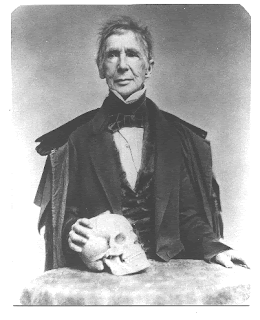Before
Rosamond Warren Gibson’s grandfather Benjamin Crowninshield (1772–1851) became
Secretary of the United States Navy (1815–1818), he and his brother George,
like himself a Salem, Mass. merchant, offered three vessels to the US
government for service as privateers during the War of 1812. These were the
ship John, the sloop Jefferson, and the ship America. The family’s foray into
privateering had begun much earlier, however. The earliest reference to a
Crowninshield privateer that I could find was another ship called America, which served in the Quasi War
with France (1798–1800). Additionally, in the American Revolution, Salem, Mass.,
sent out 458 privateers, and it is possible Crowninshield vessels were among
that number.
Of
these, the America of the War of 1812
is the most famous.
In
Recollections of My Life for My Children,
Rosamond Gibson mentions the America.
She relates a family story that during the War of 1812 the vessel captured an
English merchant ship bound for India and seized the cargo aboard, which
included goods owned by an English family. Found among these personal
possessions was a miniature dining room table for a child’s dollhouse. Years
later, a young Rosamond added this piece of toy furniture to her own dollhouse.
(See “The Warren Dollhouse,” January 1, 2016.)
 |
| Benjamin Williams Crowninshield. Portrait by U.D. Tenney. |
Having
always had a fascination with ships and the history of wars, I wanted to
research the America and its career
as a privateer. I also wanted to try and corroborate Rosamond’s story about the
English ship sailing for India before its interception by the America. While the evidence does not
support the story that America captured
a ship on its way to India, some of the prizes it took did find their way into
the hands of various Crowninshield family members, meaning the young Rosamond
may well have played with toys meant for English children some forty years
earlier.
Built
in 1803, the America originally went
out to sea as a merchant ship and spanned a length of 114 feet, was 30 feet
wide, and had two decks. But in 1812, when she was commissioned as a privateer,
her dimensions were reduced to make her speedier and more maneuverable to
better suit her new purpose. Now 108 feet long and with her upper deck removed,
she averaged a top speed of 13 or 14 knots, which she could maintain for
several hours at a time. With this new speed and agility, the America outpaced enemy ships with
relative ease, avoiding capture on several occasions.
As
a privateer, the America was
authorized by the United States Navy to prey on English commercial vessels,
taking them and their cargo as prizes. Operating mainly in the North Atlantic,
the America captured forty-seven
vessels, twenty-seven of which were sent back to the United States. These
twenty-seven ships and their cargoes together were valued at $1.1 million. The
other vessels were either recaptured by the British Royal Navy or destroyed at
sea.
This
kind of warfare proved vital to the American naval effort. When war broke out
in 1812, the US Navy was grossly underprepared, with only about a dozen
operational vessels. The Royal Navy, however, had about 110 warships, 4
fifty-gun ships, and 134 frigates. To compensate for this clear disadvantage,
the United States put about 500 private ships into service as privateers.
Encounters
between US privateers and British ships inevitably led to violent exchanges of
cannon fire in naval battles. And the America
found herself in such a situation on at least one occasion, when she
engaged the Princess Elizabeth, a
private armed ship, in an intense firefight that lasted a little over an hour.
This ended in the British ship’s surrender with two fatalities. The Americans
came out with no loss of life and minimal damage to their ship.
Unfortunately,
the ending to America’s story is not
so glorious. After the war, she spent the next fifteen years docked before
being auctioned off in 1831, when she was destroyed and stripped for metal.
By
Timothy Spezia, museum docent
Image Sources:
Ship America, 1806: from Old Time Ships of Salem, 33.
Benjamin W. Crowninshield portrait: Benjamin W. Crowninshield wikipedia entry. Naval History and Heritage Command identified the artist, U.D. Tenney, a portrait painter of the 19th century.
America in Chase of the Princess Elizabeth: from An Account of the Armed Ship "America" of Salem, 44.
Sources:
Carl
Benn, Essential Histories: The War of
1812 (New York: Osprey Publishing, Ltd, 2002).
Bowdoin
Bradlee Crowninshield, An Account of the
Private Armed Ship “America” of Salem (Salem, Mass.: Essex Institute,
1901), accessed via hathitrust.org, December 5, 2015.
Jonathan
R. Dull, American Naval History,
1607–1865: Overcoming the Colonial Legacy (Lincoln: University of Nebraska
Press, 2012).
Essex
Institute, Old Time Ships of Salem (Salem,
Mass.: Essex Institute, 1917), 33–34, accessed via hathitrust.org, December 5,
2015.
Rosamond
Warren Gibson, Recollections of My Life
for My Children (privately printed, 1939).
Faye
M. Kert, Privateering: Patriots and
Profits in the War of 1812 (Baltimore: Johns Hopkins University Press,
2015).
Edgar
Stanton Maclay, A History of American
Privateers (New York: Appleton Press, 1900).

















